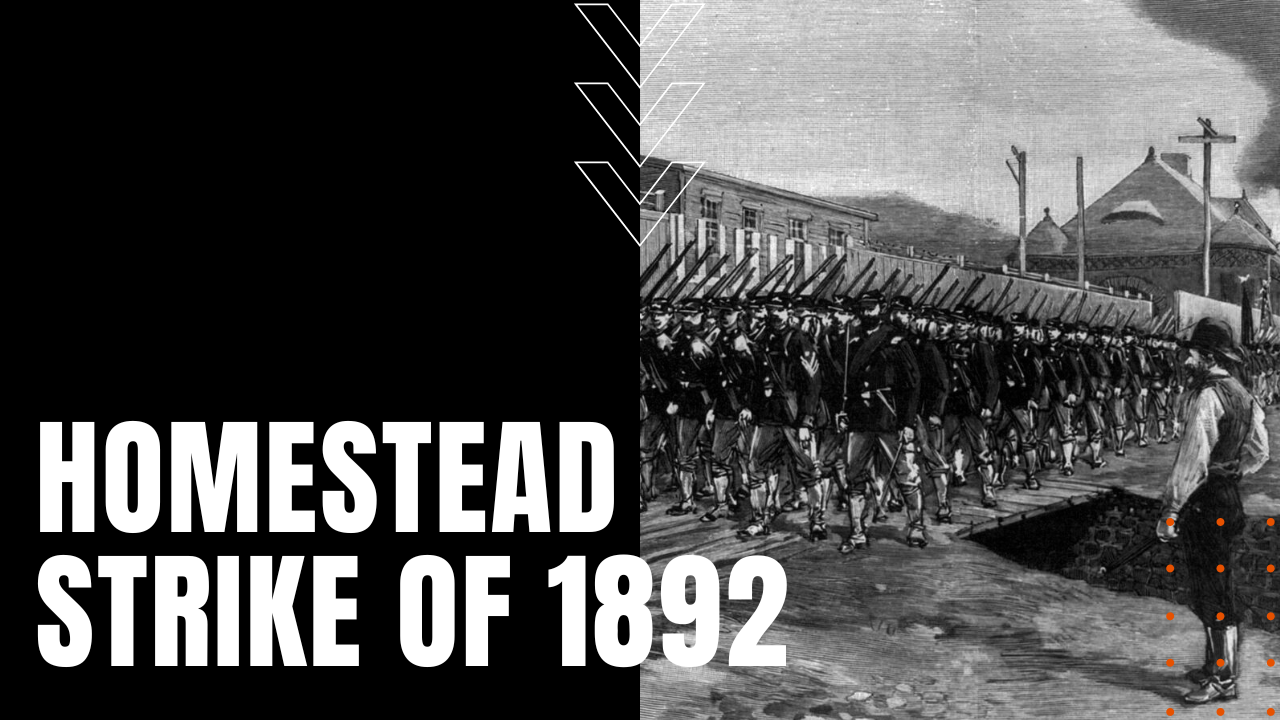Homestead Strike of 1892

Born into poverty in Dunfermline Scotland, by 1892, Andrew Carnegie had become one of the wealthiest industrialists in the United States, creating a conglomerate of steel mills through construction or acquisition under the banner of Carnegie Steel.
Fair-weather Labor Advocate
That same year, his reputation as a philanthropist and vocal advocate of labor causes were put to the test, when Carnegie set his focus on his newly-acquired Homestead Steel Works near Pittsburgh Pennsylvania, investing millions of dollars in an effort to retool the ailing plant for greater efficiencies, at the same time reducing wages on his 3,800-man workforce. In the course of implementing his business model, he turned to his chairman, Henry Frick, to do the dirty work.
Frick Ramps up Production
Of his Homestead workforce, 725 union workers banned together against falling wages and the dangers of their workplace, and when Frick caught wind of an impending labor strike, he ramped up steel production in anticipation of a plant shutdown, leading to an escalating string of accidents under the hazardous working conditions in the plant.
No Negotiation with Strikers
In the face of multiple deaths to a now overwhelmed and vocal workforce, Frick pushed back with a notice that Homestead Steel refused to negotiate with strikers, at the same time stating in no uncertain words that working conditions would remain unchanged. In response, 2,000 steelworkers barricaded the entrance to the plant, in an effort to block Frick from sending in strikebreakers, obliging Frick to hire 300 Pinkerton guards to clear the blockade.
Strike Turns Deadly
When the Pinkertons arrived by barge down the Monongahela River on the morning of July the 6th, workers and their families fired ancient guns and even an old cannon from their high ground position along the banks of the river, and when the Pinkertons returned fire with repeating Winchester rifles, seven workers and three Pinkertons were killed, along with several dozen badly injured strikers and guards.
Enter the National Guard
The governor of Pennsylvania soon called in 8,500 National Guardsmen to lock down Homestead under martial law, while Carnegie’s reputation suffered dearly when he failed to offer a public response while vacationing in Scotland. In what would become one of the most violent strikes in the early history of the American labor movement, the striker’s brutal treatment of the Pinkertons, even after their white flag surrender, would stain the image of labor unions in the court of public opinion, at the same time ending the use of Pinkerton mercenaries in future labor disputes, making the Homestead Strike of 1892, an early ignition point in the American labor movement.
